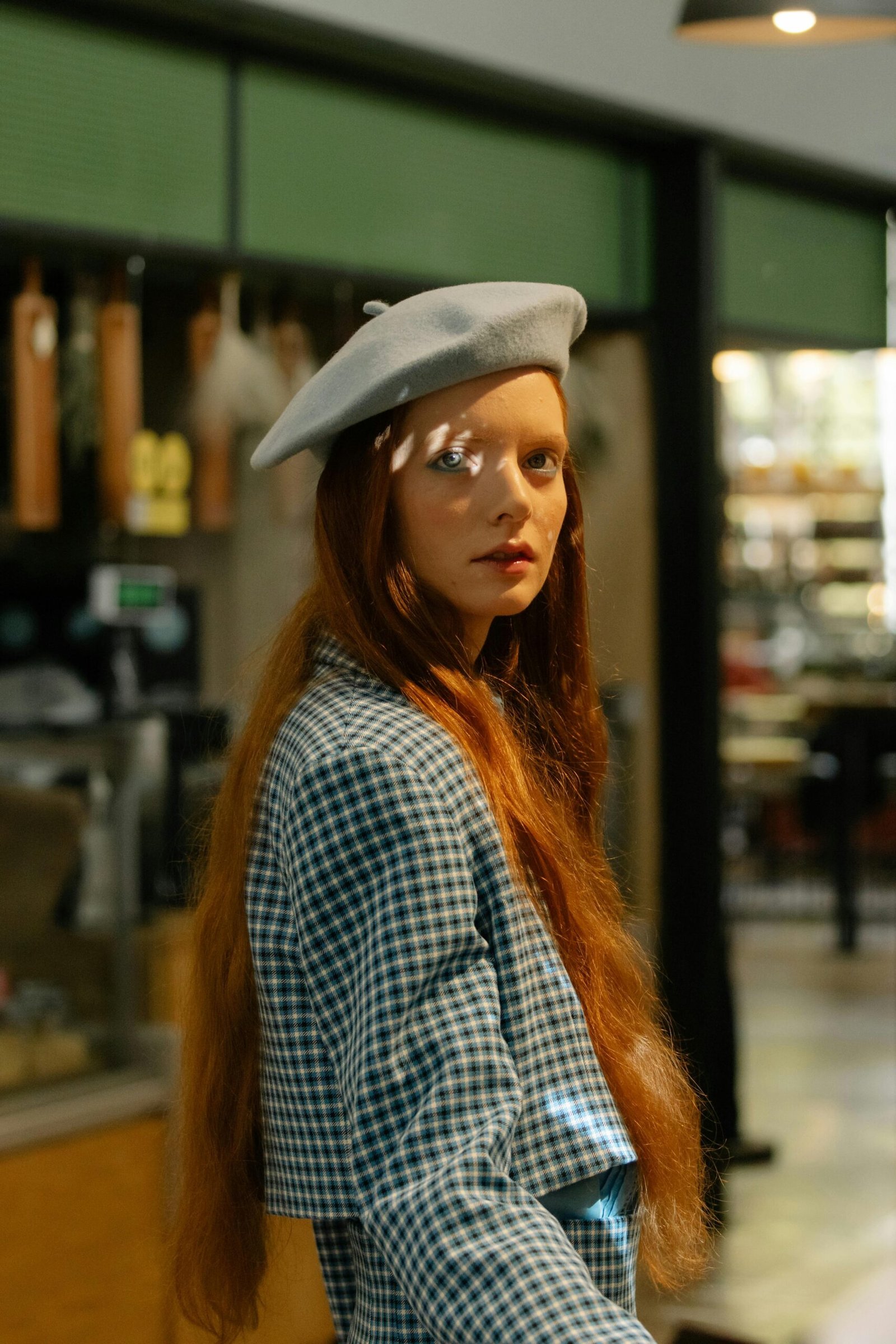Photo Credit (Pixabay)
It can be intimidating to reach the half-century mark in many ways, and your clothing is no exception. It can be difficult to decide what to wear if you’re fifty or older. I am also a member of the “over 50’s” group, having hit that milestone eighteen months ago.
Some of this may resonate with you if you’re fifty years of age or older:
Your body shape has changed, and you don’t know how to dress to fit it. You can’t locate stores that seem to cater to your age group, and you no longer like shopping for clothes. You feel like you’ve “lost your way” when it comes to your wardrobe.
You feel inconspicuous.
You have a wardrobe full of clothes you no longer wear because your lifestyle has changed. You don’t want to appear nineteen, but you also don’t want to seem like “mutton dressed as lamb.”
Your confidence can be shaken by losing your style mojo. Getting dressed has a significant impact on your self-esteem because it is a daily activity.
I adore helping people rediscover their sense of style by assembling a wardrobe of their favorite items. Here are my best recommendations for clothing selection:
- Put on your own clothes.
Over the years, you might have evolved. You might be the quiet girl at school who wouldn’t shout “boo” to a goose, just like me, and now you love being around people. Or perhaps you’ve switched careers and are now working from home in a much more relaxed setting after previously being suited and booted at an office. On the other hand, you might be moving up the ranks and into a more senior role. Perhaps your days are spent taking gym courses, volunteering, taking care of someone, or working part-time because you have committed time to raising a family that has now flown the nest.
What you wear should reflect who you are, regardless of what you do or how you spend your time. If you have a job, consider your personal brand, or how you want to be perceived, and make sure your attire speaks for you. Additionally, in general, wear clothing that makes you feel completely at ease when you’re simply being yourself. Choose clothing that reflects your inner self and true self rather than trying to emulate your friend’s style or picking anything based only on what you’ve seen on a mannequin.
What you wear shouldn’t be a case of “fake news,” to use the phrase that’s so popular right now.
- Dress according to your personal style.
When it comes to clothing, everyone has preferences. For instance, I adore bright colors, patterns, and clothing with unusual accents, but you may prefer a neutral color scheme, a minimalist style, and block colors.
I’m a bit “matchy-matchy,” meaning I like my clothes to seem coordinated, and I adore costume jewelry. On the other hand, you might not wear any accessories at all or prefer scarves to jewelry. For instance, you can adore an extremely imaginative style that features mismatched materials and patterns. Comfort is vital, but I don’t live by it. If you’ve seen my heels, you’ll know what I mean. But for you, comfort might be your first concern, and you might want to touch items before you buy them.
It’s crucial to use your clothing to express your particular style. To find out if you can explain your ideal style, consider the following selection of words:
To decide what to buy and what to wear, try to pick just three or five adjectives that best capture your sense of style. If you’re changing your clothing, you can use them to determine what to donate and what to keep. If something doesn’t fit your personal style, don’t buy or keep it!
- Dress in figure-flattering attire.
As we age, it’s quite normal for our bodies to change shape. Your weight fluctuates, and whether you’re perimenopausal or have gone through the menopause, you’ve probably gained some weight around your waist.
It can be really unsettling to discover that your form has altered and that the things that were previously your go-to “go-to” outfits are no longer as flattering when you’ve been accustomed to dressing a certain way and have felt at ease adopting the same trends since you know they suit you.
The good news is that learning to dress a new body type may take some time, but it is definitely possible, just like acquiring any new skill. You may easily determine your body form by standing in front of a mirror and first determining if your hips and shoulders are broader than the other or in alignment, and then determining whether or not your waist is indented. This will determine the basic shape of your body:
You may listen to my stylist friend Beth and I discuss how to figure out your body type in one of our Style Mojo videos by clicking the video link (image) below. We also provide best practices for clothing each shape in follow-up films.
Or see Body Form Flattery for written best practices on how to dress each form.
It’s not quite as simple as simply knowing your shape; height, scale (bone structure), and body proportions (how long or short your torso is in relation to your legs and where your natural waistline rests) all play a significant role. The details, such as your shoulder form, bust size, and feelings about your knees, thighs, and upper arms, are also important.
Here’s a brief illustration to demonstrate the impact that something as basic as a neckline can have:
Simply consider where you want the eye to be drawn if trying to understand every aspect of your physique seems a little overwhelming. Select clothes with striking styles, colors, patterns, and textures, for instance, if you favor your upper half. Or, if you have amazing legs, try wearing tighter-fitting pants or shorter skirts with asymmetrical hemlines or that are lighter or brighter than your top to attract the eye down.
A style consultation will provide you with all the answers if you’re looking for clear direction! We’ll put the pieces of the fashion puzzle together for you, so you’ll know exactly which cuts, styles, and materials to choose from—shirts, dresses, skirts, pants, and more—even which shoes go with which ensembles.
- Don a colorful outfit!
It can be tempting to hide away in muted, neutral colors as we age, but doing so can make you feel invisible. Including color in your clothing may truly make a huge impact. Colors can make you appear bright and healthy, and yes, even younger, but they can also make you appear exhausted and sick.
You may feel that your colors aren’t functioning as well as they used to if you had them examined some time ago. You might be correct. Your color scheme might have changed if your skin tone or hair color had. Jamie Lee Curtis now prefers a cooler color scheme and has accepted her grey hair color.
To be certain that you’re wearing the colors that best suit you, I’d strongly advise getting a color consultation. Your Color Fan will be filled with hues that have the right depth, undertone, and clarity for your unique coloring style. Why not choose a color that complements your appearance and mood if you’re going to buy clothing anyway?
- Prioritize quality above quantity
I’ll be the first to tell you that having an entire wardrobe of inexpensive clothing is totally feasible. I prefer to purchase gently used clothing and items that are on sale rather than dressing entirely in expensive clothing! But it’s also reasonable to argue that there are occasions when it makes more sense to prioritize “quality over quantity” and spend more money on the items you wear the most than you may have up to this point. Not only are there excellent environmental reasons to choose long-lasting stuff, but you’ll also discover that high-quality clothes typically fit better and have a more attractive silhouette. They will last longer in your closet because of their stronger construction, higher-quality fabrics, possible lining, and other features.
An excellent illustration of this is jeans; labels like NYJD and Salsa, for instance, use innovative technology to keep everything in place, making them not only high-quality but also incredibly attractive. Yes, the High Street does have some excellent imitations; however, they frequently don’t wash as well and lose their shape more fast. Therefore, I would suggest investing in jeans if you wear them frequently.
In terms of fabric, you may discover that a thicker ponte is more attractive than, for instance, a thin jersey that flaunts every lump and bump.
Another nice example is swimwear. Even though you don’t wear it every day, it’s a holiday must. Paying a little bit extra typically pays off if you want cup-sized styles that are comfortable, breathable, shape-enhancing, and truly keep their shape. For instance, I don’t believe I’ve ever heard of a customer being dissatisfied with a Miracle Swimsuit.
Therefore, it makes sense to give off quantity for quality. Since we all frequently have too many clothes, adopting a capsule wardrobe strategy (see 7 below) will ensure that you don’t actually need that many items anyhow, which means you’ll spend more money on clothing more sensibly rather than more. Consider the expense per wear.
- Put “YOUR style” ahead of rapid fashion.
Similar to the quality over quantity debate, I always advise choosing clothing in styles that you like and that fit you rather than just because it’s the newest trend. It’s true that being up to date will prevent you from feeling dated and shabby, but you don’t have to follow every trend. Since the newest styles are frequently simply reimagined copies of earlier styles, shopping your own closet is a great way to stay up to date! Seasonal collections usually seem to have florals, animal patterns, stripes, and checks, don’t they?
Therefore, if you truly appreciate fashion, keep an eye on it, embrace it, and have fun with it; alternatively, figure out your own style formula and just update your looks in your own way by nodding to a trend rather than mindlessly duplicating it.
It is certainly worth noting that once you are over fifty, you should probably stay away from certain fashions and fads. If you’re like me, you’re probably overwearing crop tops that flaunt your belly and short miniskirts. I’ll let my teenage daughter handle those! I’m not saying we have to hide everything, but it can be unflattering to expose too much skin.
- Construct a capsule wardrobe
I’m passionate about the idea of capsule wardrobes, which are closets with fewer items that allow you to create a variety of mix-and-match outfit alternatives. It greatly simplifies the daily job of getting dressed. If you prefer having many options and/or keeping things compartmentalized, you don’t have to stick to just one capsule. You can have seasonal capsules, work capsules, home capsules, occasional/going out capsules, holiday capsules, etc.

